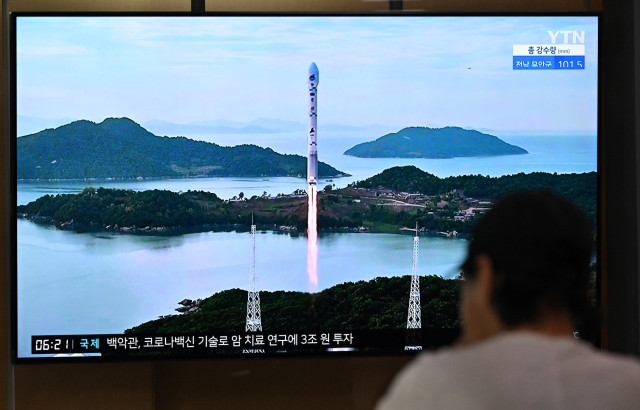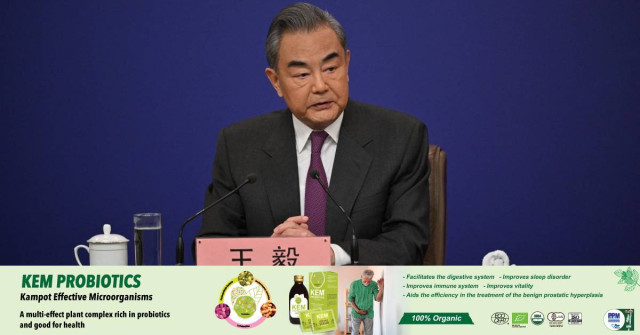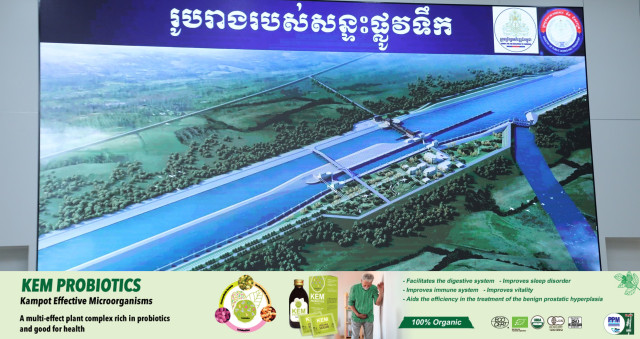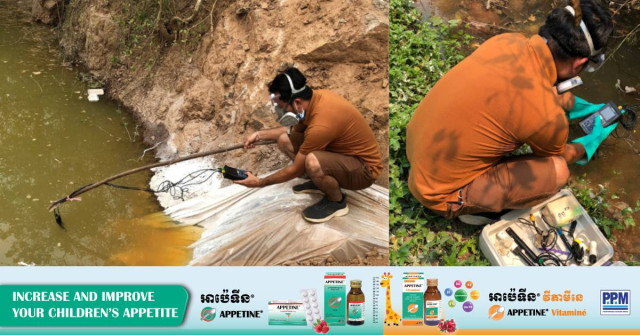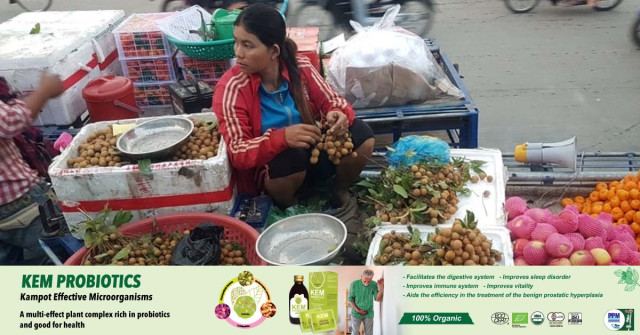A Whole Life of Sacrifice to Preserve Khmer Identity

- By Lay Lon
- February 21, 2022 4:58 PM
A Kampuchea Krom Buddhist Monk’s Story
Wearing robes in dark red with a long-sleeve men’s T-shirt and glasses, his eyebrows and hair freshly shaved, Venerable Sang Moeng answered the questions in Khmer but with an accent slightly different from the accent of Cambodians in the country.
Ven. Moeng, who is 60 years old, was one of the Buddhist monks who taught Buddhism, Khmer language and Cambodian culture to Khmer Krom people in Southern Vietnam. He taught them to know who they are but not to rebel against the Vietnamese authorities. “We have never taught people to revolt against the government or to contemplate seeking revenge on the State of Vietnam,” he explained.
The French Protectorate determined that Cambodia’s southern region was part of Vietnam on June 4, 1949. The Vietnamese administration has oppressed the Khmer Krom people as they have kept learning Khmer language and history, maintaining Khmer culture, and advocating for the freedom of their minority group. It is difficult for Khmer Krom people to adapt to the Vietnamese lifestyle because Cambodia and Vietnam have entirely different cultures, religions, languages, and regimes. These two countries have repeatedly been in conflict over the last three centuries.
The Vietnamese authorities have used a culture of intimidation toward the Khmer Krom people revolting against their rule. Ven. Moeng was one of the subjects captured because he was an activist in Kampuchea Krom.
The government was not happy to see that this minority kept its ancestors’ language and culture, which define them as Khmer Krom people.
Ven. Moeng was born on July 1, 1949, in Russey Srok Village, Russey Srok Commune, Kampong Spean District, Preah Trapeang Province, Kampuchea Krom, now called Tra Vinh, in South Vietnam. When he reached five years of age, he could see how painful it was for his family and the Khmer Krom people during the ideological competition and conflict between the U.S. and U.S.S.R.
“When I was five or six, I remembered that the lives of Khmer Kampuchea Krom people during the 1960s and 1970s were so difficult,” Ven. Moeng said. “It is because our livelihoods were about farming and at that time was a war.”
He had five siblings, but today only three are alive. His younger sister lives in Kampuchea Krom with his father who is 91. His older sister lives in Phnom Penh, Cambodia, and he lives in Minnesota, in the United States of America.
When the gunpowder, bombs and cannonballs destroyed his village, Ven. Moeng was wounded.
“At seven years old, I was injured by a cannonball at Veluvan Russey Srok monastery,” Ven. Moeng recalled.
He was distressed to see his fellows villagers victims of war.
Ven. Moeng became a novice monk in 1975 when the Pol Pot regime took control of Cambodia and evicted the whole population of Phnom Penh to the countryside.
“In 1975…preceptor Thach Soy gave me an advice, that I was older than 16 and so that I should become a monk. I decided to take his advice,” Ven. Moeng said.
He and other Khmer Krom people were distressed to learn that the Cambodian people were being killed and starved to death during the genocidal regime. As a Khmer Krom Buddhist monk, he worked hard to help the refugees who were fleeing Cambodia and were mainly arriving via Svay Rieng Province, which was near Kampuchea Krom.
“Khmer Kampuchea Krom people knew the situation since the Khmer Rouge, Democratic Kampuchea, had come into control,” Ven. Moeng said. “We knew via VOA [Voice of America radio news in Khmer] and the Khmer Rouge’s radio broadcast.”
In October 1981, Ven. Moeng was ordained by his preceptor, becoming a bhikkhu.
Khmer Krom Buddhist monks and monasteries are essential to the Kampuchea Krom community, playing an essential role in protecting the Khmer Krom identity. “We have motivated younger people to understand history, that Kampuchea Krom is a land of Khmer,” Ven. Moeng said. “I am speaking the truth; the [Vietnamese authorities], they are afraid we will revolt against them.”
Ven. Moeng volunteered to teach monks and laypeople. His contribution caused his life to be at risk. Ven. Moeng fled his country as people were being arrested, imprisoned, or killed. In 1985, the Vietnamese authorities arrested and executed Ven. Kim Toc Chon, who was one of the Khmer Krom Buddhist monks, by lethal injection. Later that year, Ven. Moeng and another monk decided to leave. “I saw the situation…and fled from my birthplace to Phnom Penh in November 1985,” he recalled.
In Phnom Penh, they hid at a friend’s home for seven days because the regime at the time was prohibiting young men from becoming monks. Afterwards, they were invited to stay at the Wat Prey Ek Ta Nong monastery in Kampong Cham Province’s Koh Sotin District.
“During the regime of the People’s Republic of Kampuchea [ from 1979 through 1989], they did not allow younger monks to stay, did not allow younger monks to be ordained, and they only allowed former monks who were older than 50 or 51 to be ordained.”
“Venerable Hang Chern met us,” he recalled. “He greeted us, he pitied us, and he was compassionate toward us…He invited us, two monks, to stay at Ek Ta Nong in Kompong Cham in late 1985 until 1990.”
Ven. Moeng returned to Phnom Penh in 1991, the political regime having changed in Cambodia. For three months, he stayed at Wat Dambok Khpos, and then relocated to Wat Sansom Kosal, where he met Socheat Sen.
Sen was born in Takeo, one of the provinces near the Kampuchea Krom territory, and he had seen many Khmer Krom people–and especially Buddhist monks–attempting to flee Vietnam and illegally relocate to Cambodia. “I understood that [Ven. Moeng’s] situation was similar to that of other monks without passport,” said Sen who is now 60 years old. “He told me that he had torn [his passport] because he was afraid of being arrested and sent back.” Ven. Moeng and Sen were roommates for two years.
“His character, behavior, and his education, as I observed when we stayed together, was so good,” Sen said. “His patience to stay there was unbelievable.” Ven. Moeng truly is a tolerant, kind and compassionate person, he added.
Sen later moved to the United States where he has been attending the Wat Khmer Samaki Santikaram, a Cambodian Buddhist temple in North Chelmsford in the state of Massachusetts.
In 1996, Ven. Moeng was invited to volunteer at the Watt Munisotaram in Hampton city in the US state of Minnesota. Today, he is the president of this monastery and also president of the Cambodian Buddhist Monk Society in United States. Prior to the pandemic, he organized Cambodian and Buddhist celebrations and festivals to reach out to Cambodian Americans.
Ven. Vicheth Chum, who is vice-president of Watt Munisotaram, has been associated with Ven. Moeng since he was his student in 1990 at Wat Sansom Kosal in Phnom Penh. As he explained, Ven. Moeng initiates projects to support Cambodian Americans as well as people in Cambodia and in Kampuchea Krom. “He has never thought that there are Khmer and Khmer Krom,” he said.
Ven. Moeng recently established a fund to help the victims of the recent floods in Cambodia, and to build libraries and schools in Cambodia, Chum said. “When it comes to any building,” he said, “he always favors Khmer art and style.”
Ven. Moeng says he is grateful for the opportunity to help maintain Cambodian and Khmer Krom’s identity. “We are Khmer, of Khmer blood,” Ven. Moeng said. “In the past, we were a single Khmer.”
Lay Lon is an undergraduate student in the Department of English, at the US University of Massachusetts--Lowell







